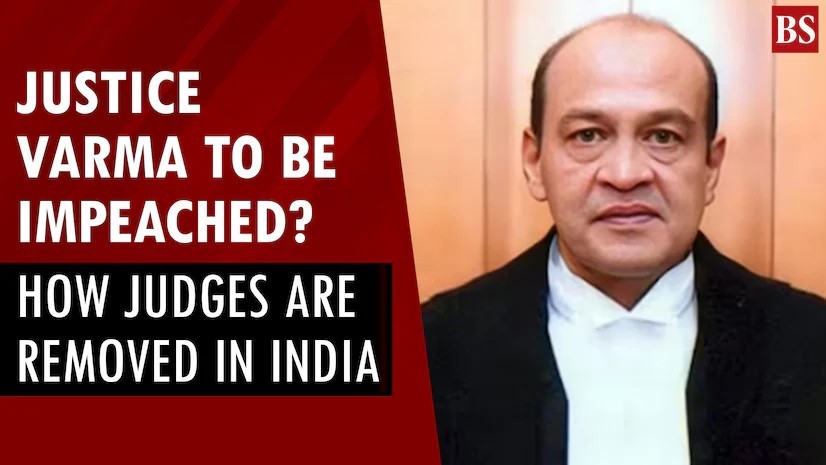Impeachment Moves Against Justice Varma Spark Controversy
Impeachment Moves Against Justice Varma Spark Controversy
Why in the News?
The government plans to impeach Justice Yashwant Varma after alleged unaccounted cash was found at his residence. Vice President Jagdeep Dhankhar has questioned the judicial in-house inquiry’s legitimacy, reigniting debates on judicial accountability, procedure, and constitutional propriety.
The Controversy and In-House Judicial Inquiry:
- A fire at Justice Yashwant Varma’s Delhi residence on March 14 led to the discovery of charred currency notes, prompting scrutiny.
- The Delhi High Court Chief Justice flagged the matter to the then CJI Sanjiv Khanna, who constituted a three-member in-house inquiry panel on March 22.
- The committee found unexplained cash and found Justice Varma’s explanation unconvincing.
- Justice Khanna advised Justice Varma to resign or retire, which he refused.
- Justice Varma was relieved of judicial duties and transferred back to Allahabad High Court.
Impeachment Procedure and Past Precedents
- Article 124(4) and 217(1)(b) provide for judge removal via presidential order after Parliament’s approval with a special majority.
- The Judges (Inquiry) Act, 1968 mandates a statutory investigation by a three-member panel.
- Past attempts include:
○ Justice V. Ramaswami (1993) – motion failed due to abstentions.
○ Justice Soumitra Sen (2011) – resigned before Lok Sabha vote.
○ Justice Dinakaran & Justice Gangele – avoided impeachment via resignation or lack of evidence.
In-House Inquiry vs. Statutory Process
- The in-house mechanism, established in 1999, is non-statutory, meant for internal disciplinary purposes only.
- Unlike the 1968 Act, it does not have legal consequences and cannot remove a judge.
- Vice President Dhankhar criticized the panel’s findings as lacking constitutional validity, stressing the need for a criminal probe.
- While the in-house report may inform government decisions, only the 1968 Act mechanism can constitutionally enable impeachment.
Understanding Impeachment of Judges in India: |
|
● Impeachment is a constitutional process to remove judges of Supreme Court and High Courts for proved misbehaviour or incapacity. |
|
● It ensures judicial accountability while protecting against political interference. |
|
● Governed by Articles 124(4), 124(5), 217 & 218 of the Constitution and the Judges (Inquiry) Act, 1968. |
|
● Requires motion in either House, a three-member inquiry committee, and special majority approval in both Houses. |
|
● Notable cases: |
|
○ Justice V. Ramaswami – motion failed due to abstentions. |
|
○ Justice Soumitra Sen – resigned post Rajya Sabha approval. |
|
○ Justice Dinakaran – resigned before inquiry. |
|
○ Justice Gangele – cleared of charges. |
|
○ Justice Dipak Misra – motion rejected at admission stage. |




